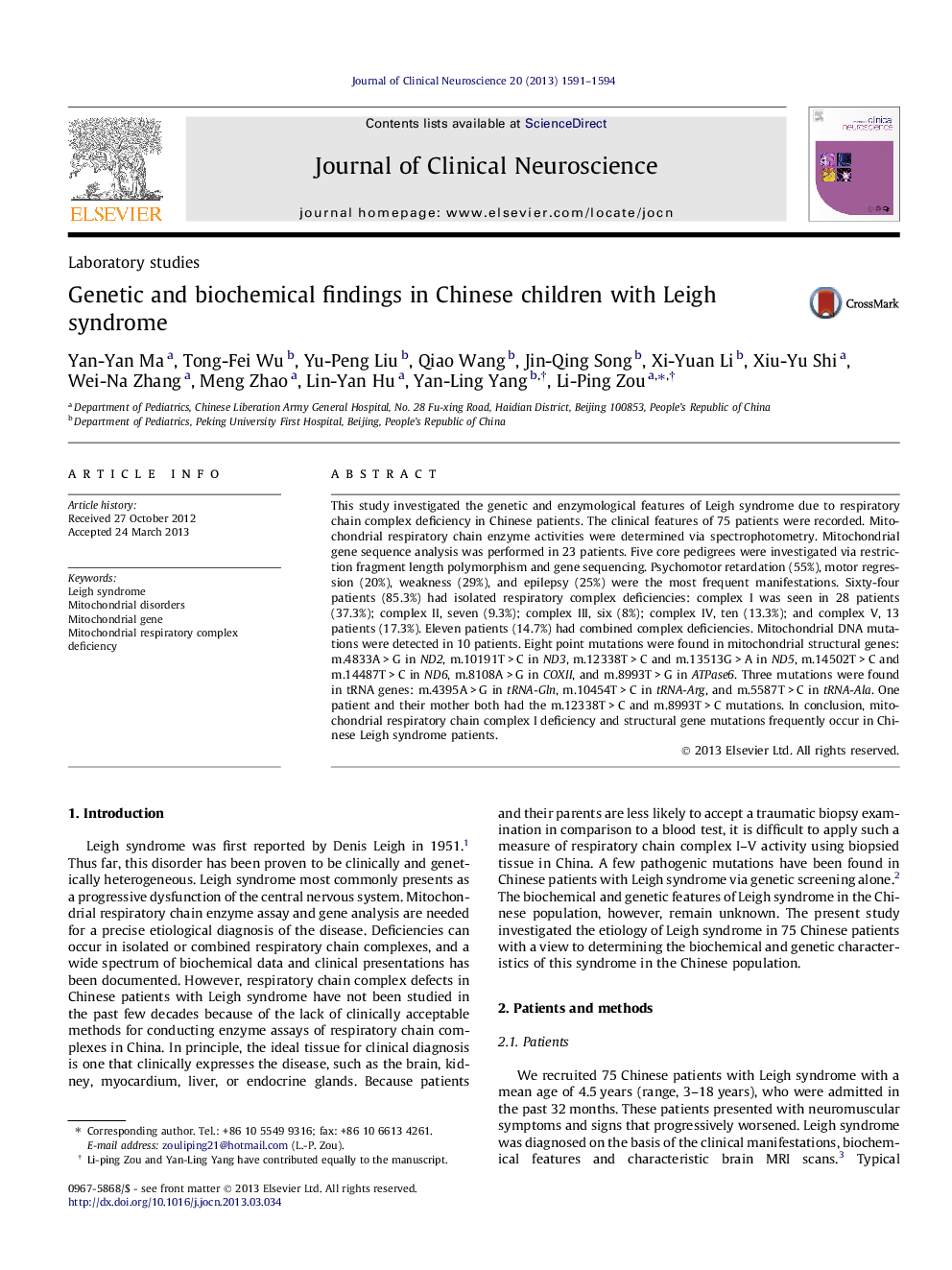| Article ID | Journal | Published Year | Pages | File Type |
|---|---|---|---|---|
| 3059727 | Journal of Clinical Neuroscience | 2013 | 4 Pages |
This study investigated the genetic and enzymological features of Leigh syndrome due to respiratory chain complex deficiency in Chinese patients. The clinical features of 75 patients were recorded. Mitochondrial respiratory chain enzyme activities were determined via spectrophotometry. Mitochondrial gene sequence analysis was performed in 23 patients. Five core pedigrees were investigated via restriction fragment length polymorphism and gene sequencing. Psychomotor retardation (55%), motor regression (20%), weakness (29%), and epilepsy (25%) were the most frequent manifestations. Sixty-four patients (85.3%) had isolated respiratory complex deficiencies: complex I was seen in 28 patients (37.3%); complex II, seven (9.3%); complex III, six (8%); complex IV, ten (13.3%); and complex V, 13 patients (17.3%). Eleven patients (14.7%) had combined complex deficiencies. Mitochondrial DNA mutations were detected in 10 patients. Eight point mutations were found in mitochondrial structural genes: m.4833A > G in ND2, m.10191T > C in ND3, m.12338T > C and m.13513G > A in ND5, m.14502T > C and m.14487T > C in ND6, m.8108A > G in COXII, and m.8993T > G in ATPase6. Three mutations were found in tRNA genes: m.4395A > G in tRNA-Gln, m.10454T > C in tRNA-Arg, and m.5587T > C in tRNA-Ala. One patient and their mother both had the m.12338T > C and m.8993T > C mutations. In conclusion, mitochondrial respiratory chain complex I deficiency and structural gene mutations frequently occur in Chinese Leigh syndrome patients.
